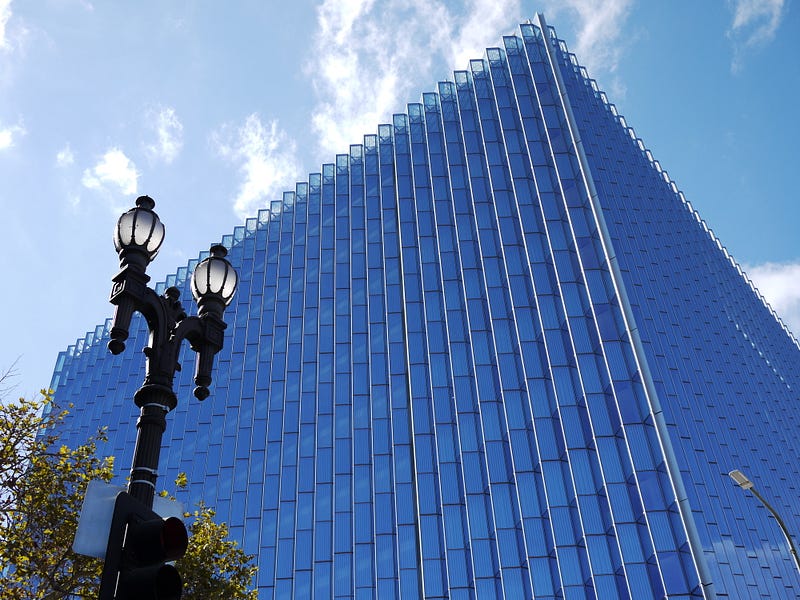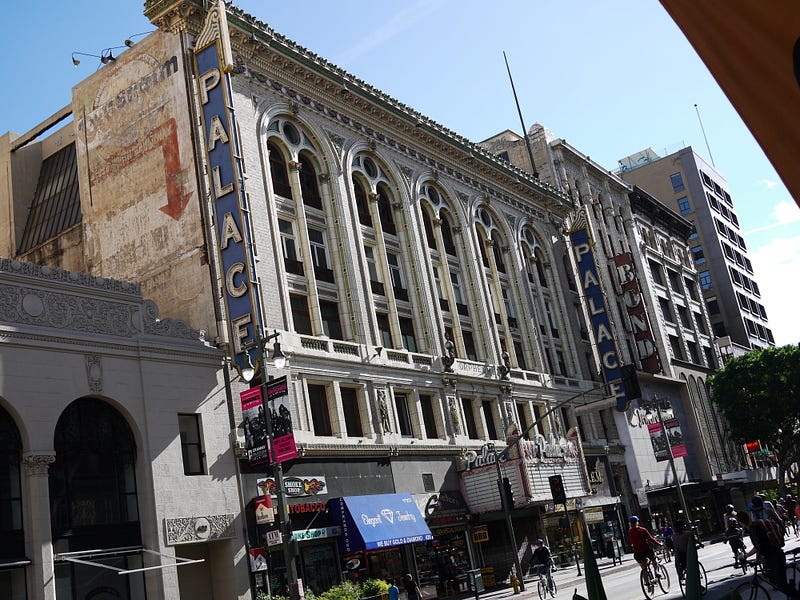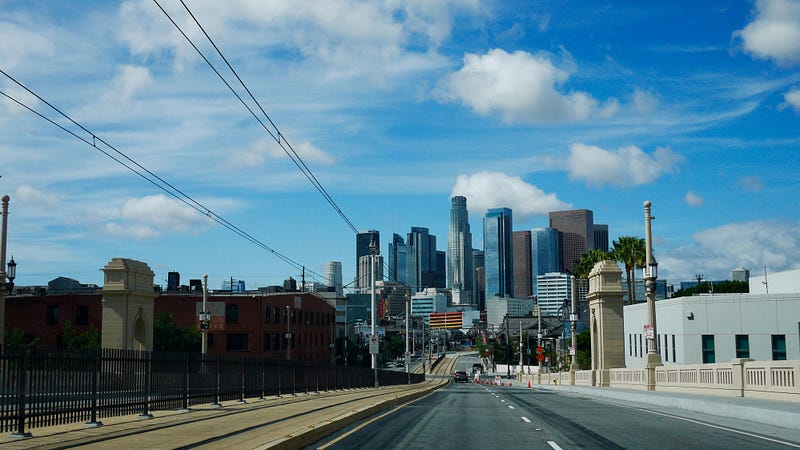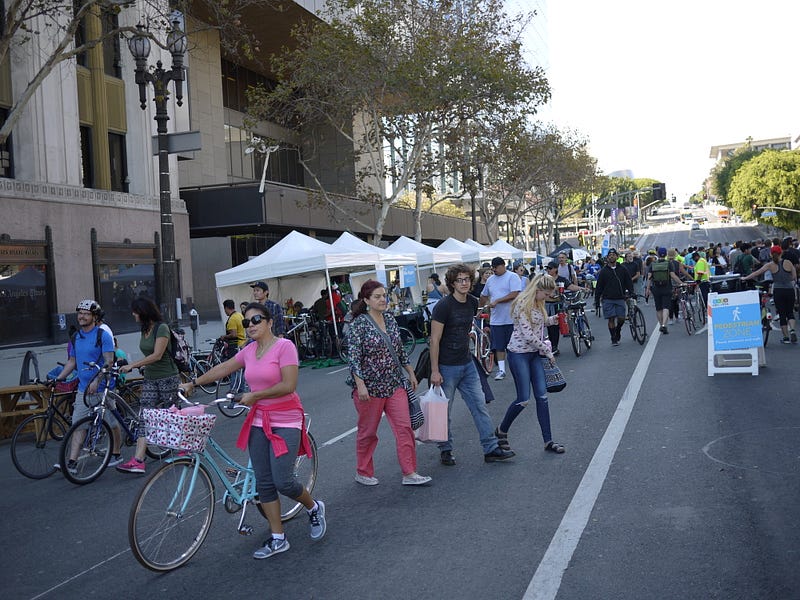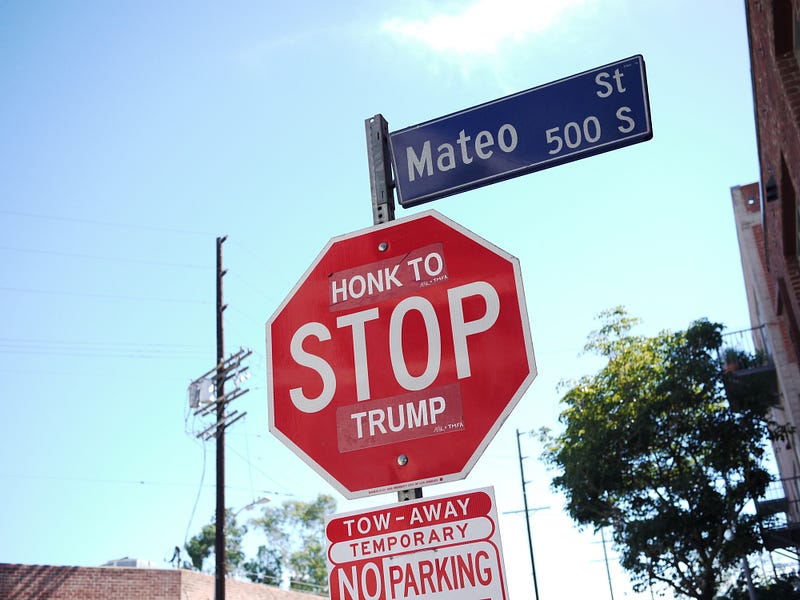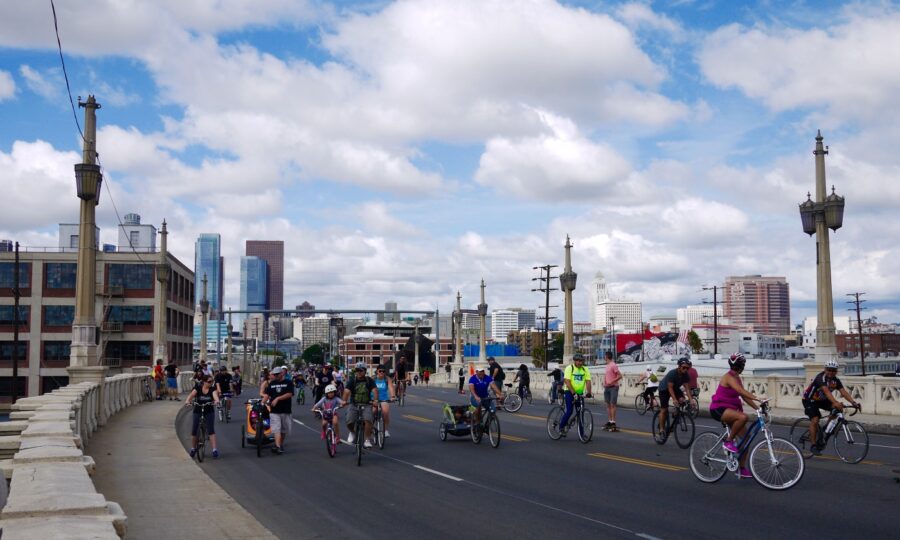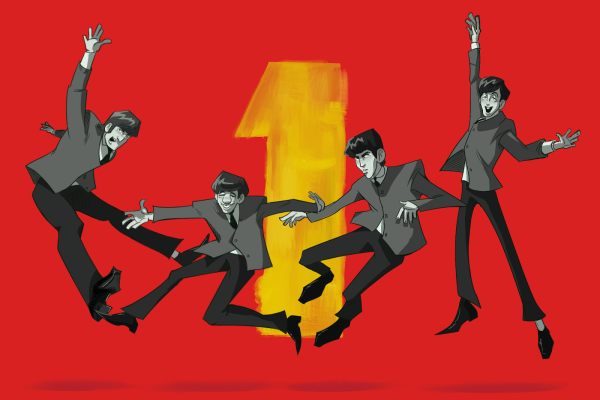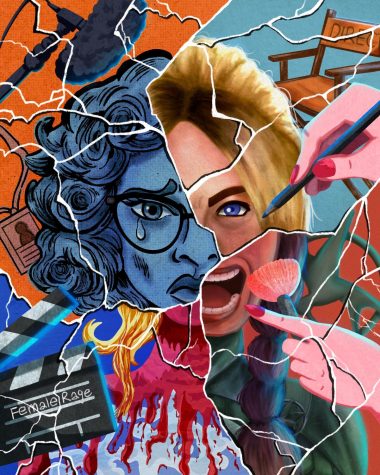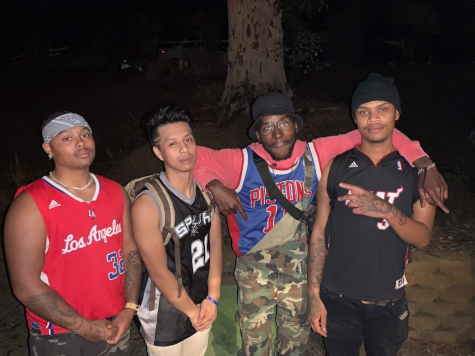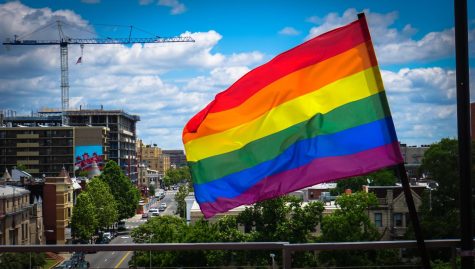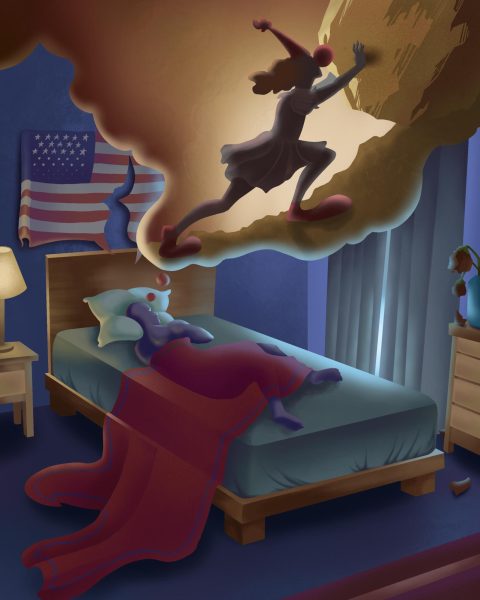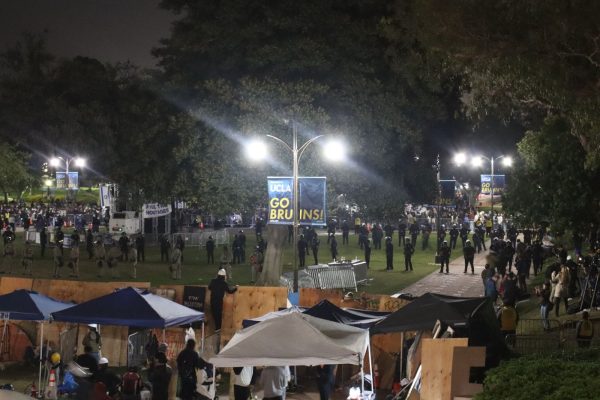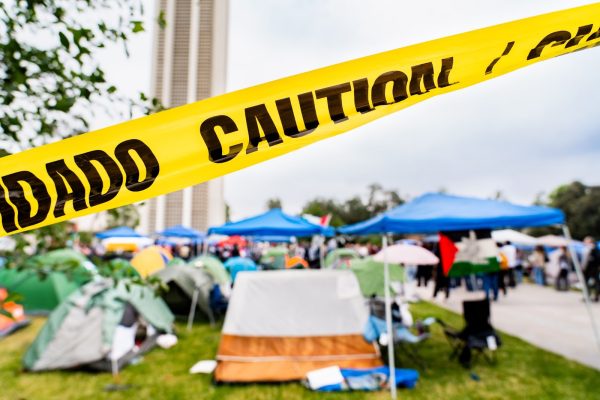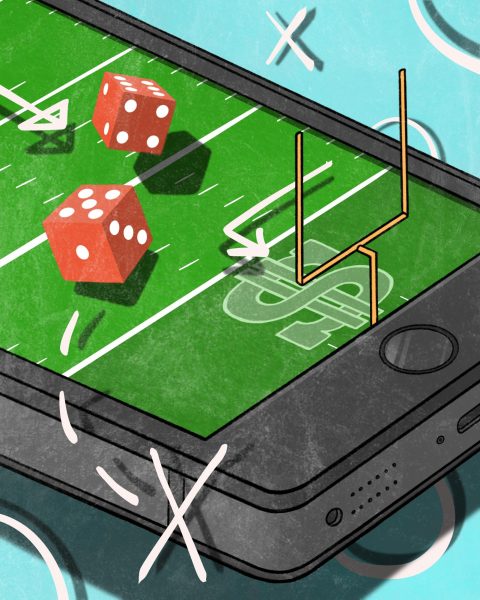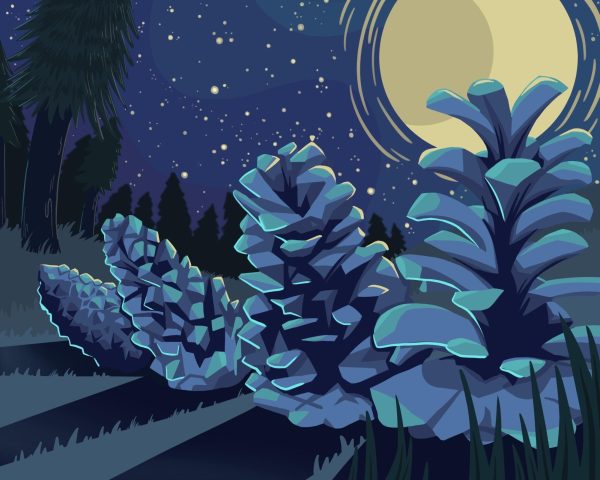Make America CicLAvia Again
Taking a walk through CicLAvia’s Heart of Los Angeles
Los Angeles is beloved for many things, but it is often cursed and despised fo its notorious traffic, which can slow to snarl, raising tempers and blood pressure at any time. Imagine what the city might feel like without cars, with streets becoming a sort of safe playground, welcoming pedestrians, skaters, scooterers and bikers. Sounds like a dream, huh?
On Sun., Oct., 16, CivLAvia returned to Downtown Los Angeles. During the day, across downtown and beyond, miles of major streets were closed to automobile traffic to allow pedestrians, skaters, and cyclists to enjoy the right of way and to experience the city from a new point of view.
Slowing down to enjoy Los Angeles by getting out of a car changes the way the city looks, the way people think about their city, and even the way people treat each other. If only for one day, the L.A. based non-profit CicLAvia allows people to experience their city in this very way.
Their website explains CicLAvia events trace their roots to the ciclovia events held in Bogota, Colombia. L.A. hosted its first CicLAvia on Oct. 10, 2010, and since then, 14 CicLAvias have been held across the region with more than a million people participating on more than 100 miles of street. The October 16 event was the fourth of 2016. CicLAvia events were held earlier in the year were Iconic Wilshire Boulevard, Southeast Cities, and The Valley.
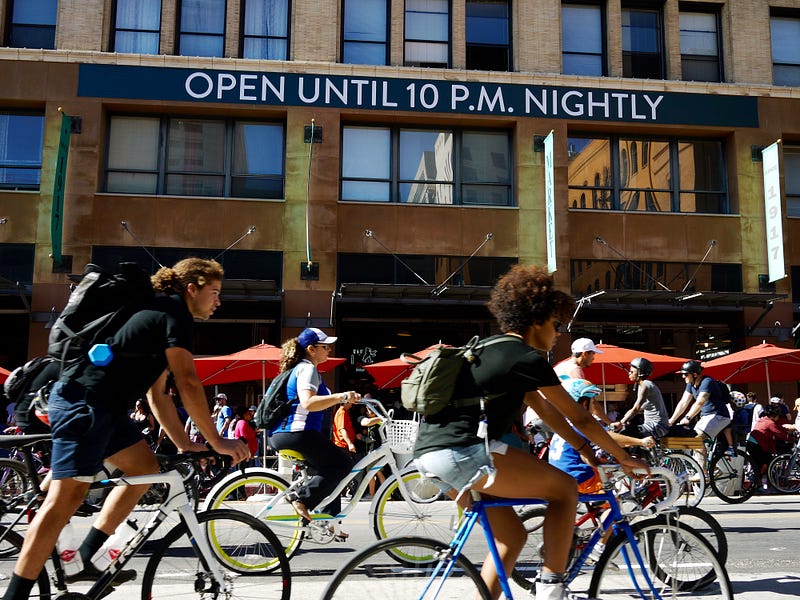
This recent Heart of LA event had an enormous route centered around downtown. It stretched east through Little Tokyo and the Arts District, over the Fourth Street Bridge and into Boyle Heights. To the north, the route descended into the city center from Chinatown along Broadway to Wilshire, and then it turned west on Wilshire, continuing to MacArthur Park.
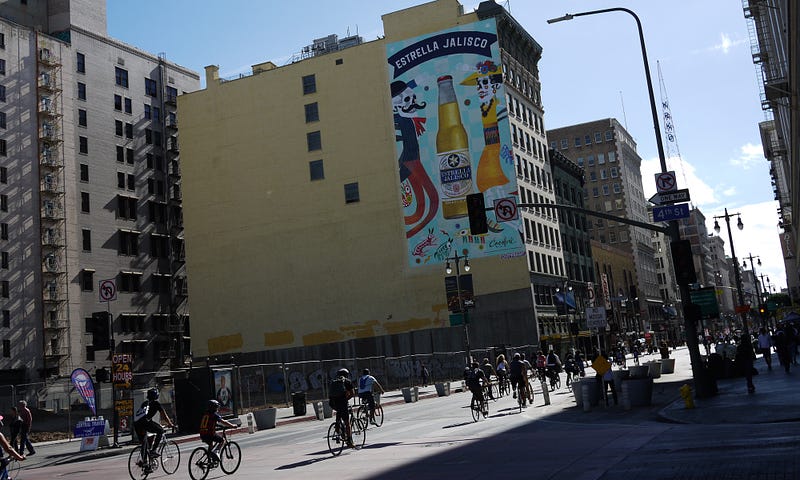
The weather was nearly perfect. A cool morning gave way to stunningly blue skies dotted with cottony white clouds, with temps in the seventies. The scene was celebratory even joyful. Many of the bikes had been tricked out with sound systems, so music was everywhere. Speakers mounted on bikes and even grocery carts pumped everything from mariachi music, to Stevie Wonder, and Earth Wind and Fire. The tunes were punctuated by the ding-a-ling of bike bells, and an occasion honk of a red-squeezed-air-handlebar-horn. Dogs jogged alongside their humans, while others rode along in mounted baskets.
The only people who did not seem to be enjoying the day were the drivers of cars who made the regrettable decision of driving downtown on this day. While the purpose is not to cause driving delays, the frustration experienced by the drivers illustrates part of the value of CicLAvia. In the Los Angeles region, many people rely on the automobile, and that is one of the single most difficult challenges facing the city.
It is easy to be miserable, angry, or frustrated in a car, especially in a Southern California traffic jam. From at east Ventura County to the north, through L.A., Orange, and San Bernardino counties, all the way down to San Diego to the south, commuters have learned to live with the 24 hour a day threat of standstill, soul killing traffic. This can lead to internal stress, which is sometimes unleashed as poor treatment of others.
In a car, there is the illusion of being alone. Suspended in bubbles of glass and steal, drivers are isolated, separated from others while at the same time, they are surrounded by people, not separated at all. It’s easier to get angry and direct that anger at others from behind the wheel. Most people would never flip their lid, or flip something else at stranger in face to face interactions. It is easier to behave badly when behind the wheel.
People may be a lot less likely to tell each other where to go when they have to share each other’s space. I did not see any riders or walkers become even remotely irate with one another.
Of course, CicLAvia is not the same as everyday life. It is a special day with special rules, but it does at least offer a glimpse of how the quality of life in a city can directly relate to the modes of transportation that are used to get around it.
Over the course of the afternoon, people of all ages and skin colors enjoyed a beautiful day together. I dare say in the spirit of the day, even Trump supporters and Clinton supporters rode side by side smiling without incident or conflict as Americans and Angelinos enjoying the diversity and beauty of the city.
After parking in the Arts District, we walked up Mateo to join the route on the Fourth Street Bridge. The view of downtown from the bridge, which spans the L.A. River, was spectacular. Heading west on Fourth, bikes whizzed down the bridge into the Arts District and on through Little Tokyo where turned right on Central to First.

We stepped off the route at Second Street to have brunch at Redbird. Redbird is so named because it is housed in the former rectory of the Cardinal at the St. Vibiana Cathedral. The dining room is convertible. When the weather is nice, they open up the roof to turn the room into a patio. It’s lovely spot for day or nighttime dining.
Chef Neal Fraser’s food is extremely reflective of Los Angeles, with references to many of the cultures that make up the city. Mexican, Asian, and American cuisine is all represented in the diverse menu. Redbird is also home to one the best restaurant bars in the city where head bartender Tobin Shea has created a menu of cocktail classics and well-balanced proprietary tipples. Brunch menu items range from $4 to $27, and cocktails are $11 to $15. A nice selection of beers and an excellent wine list are also available for diner’s enjoyment.
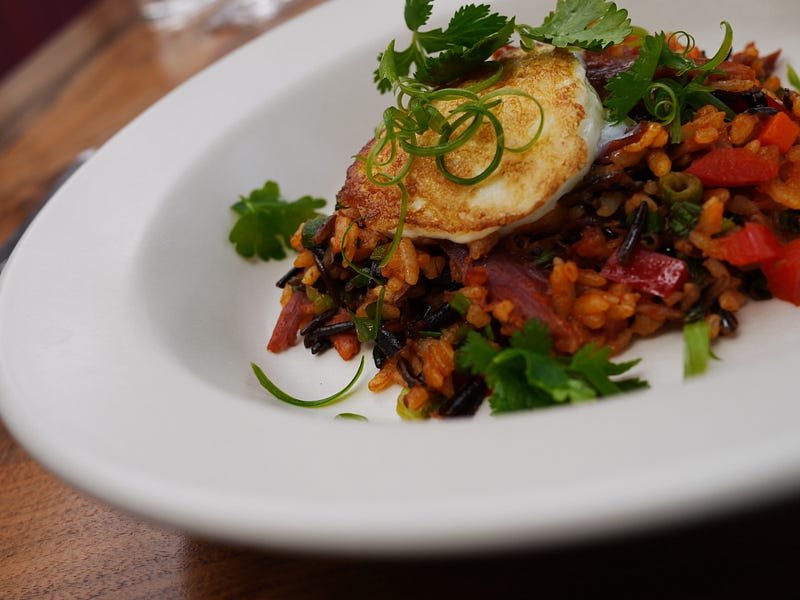
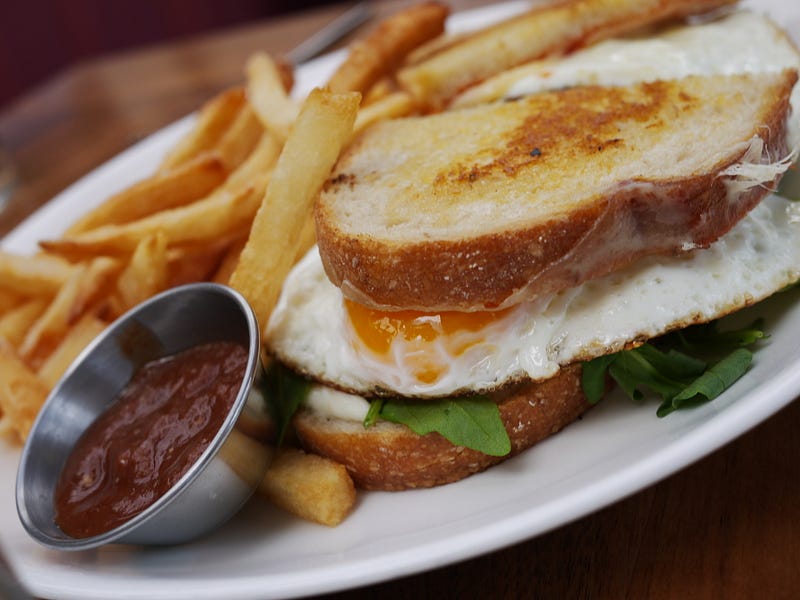
Meeting the route at Main and First Street, riders had to dismount their rides one block west at Spring. From Spring west to Broadway, the route was designated as a Pedestrian Zone. This area had a real festival feel going on with a collection of food trucks and an assortment of community minded organizations with tents lining the street to meet and speak with participants. It was very crowed, but not at all tense. People remained cheerful as they negotiated the congestion.
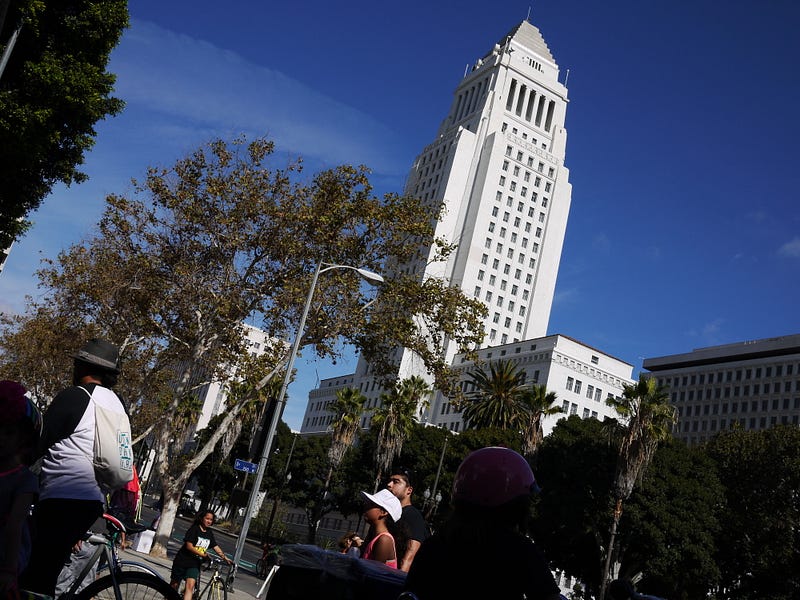
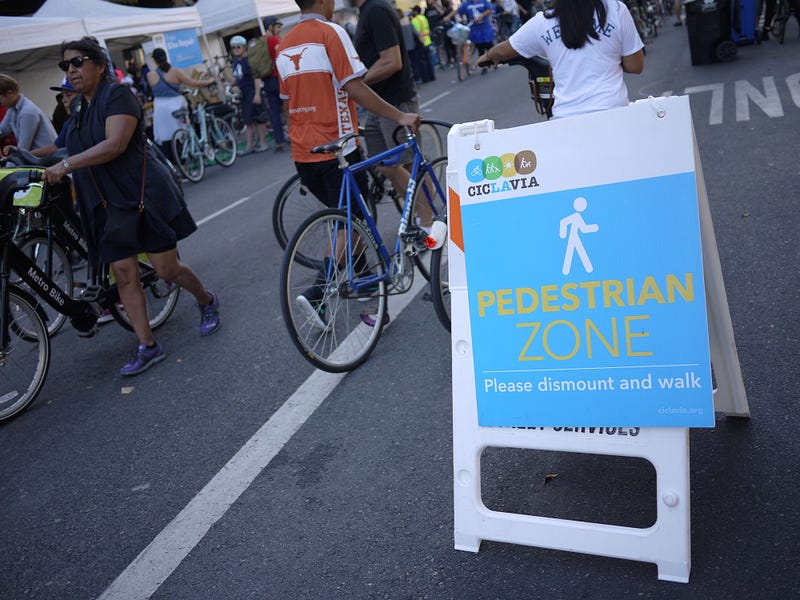
At the intersection of First and Broadway, we decided to head south on Broadway into the Broadway Theater District. Broadway too had a wonderful, cheery vibe. Many businesses along the route were open and offering a variety of specials in honor of the day.
In addition, some of Broadway’s historic, grand movie palaces including the Million Dollar Theatre at Third, which opened in 1918, and the spectacular, opulent Los Angeles Theatre, which opened in 1931, were both partially opened for viewing. The first floor of the The Bradbury Building was also open as it usually is on Sunday afternoons.
By late afternoon, our feet were getting tired, and we had a bit a walk to get back to our car in the Arts District, so we worked our way back. As we reached the Arts District the day presented us with a parting gift, a performance by an exuberant roller skater accompanied by a DJ blaring disco from a sound system mounted in a shopping cart. As the shadows were getting longer, it was a great close to a wonderful day.
Looking forward to experiencing another CicLAvia in 2017. See you there.
